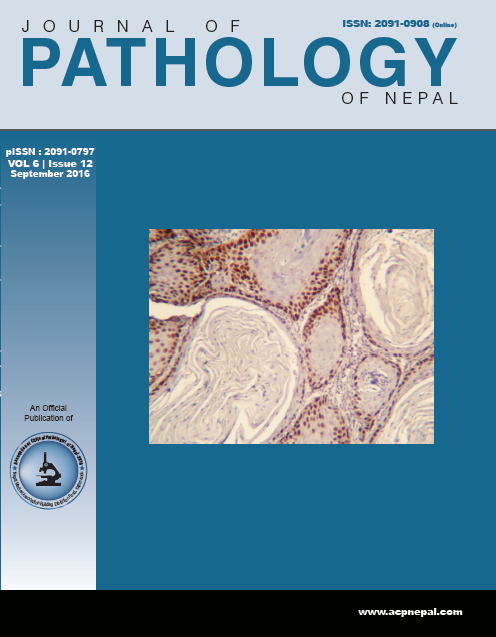Hand Hygiene: Do we follow it seriously?
DOI:
https://doi.org/10.3126/jpn.v6i12.16256Abstract
The importance of hand hygiene was highlighted in the nineteenth century during the first trial done by Ignaz Philipp Semmelweis, an obstetrician practicing in Vienna, now known as an early pioneer of antiseptic procedures. He was able to reduce maternal mortality rate in his hospital by 90% by just applying the protocol of washing hands in chlorinated lime solution before examining the patients. Semmelweis's hypothesis was largely ignored, rejected, or ridiculed. He was dismissed from the hospital for political reasons and harassed by the medical community in Vienna, being eventually forced to move to Budapest. Semmelweis's practice earned widespread acceptance, when Louise Pasteur confirmed the germ theory and Joseph Lister, pioneered antiseptic surgery. Lister practiced and operated using hygienic methods with great success.
There are many national and international guidelines which emphasize the practice of hand hygiene in reducing the incidence of hospital acquired infections (HAI). With all the evidence of decreasing the HAIs the practice of hand hygiene compliance should have been a 100% in all healthcare facilities. However, various studies done in different countries show that the compliance of hand hygiene amongst the healthcare workers is not satisfactory, ranging only 40 to 50% even in the developed nations.
Why Not?
- Inaccessible hand washing facilities: This is one of the major factors due to which the compliance to wash hands is compromised.
- Wearing Gloves: The misconception amongst the healthcare workers that wearing gloves will prevent transmission of germs is another major factor.
- Scepticism about the value of hand hygiene: CMEs, lectures, demonstrations and evidence based studies on hand hygiene should be kept in top priority to disseminate the knowledge which will reduce the scepticism.
- Lack of concept of IPAC, motivation and role model: Many healthcare centres do not have IPAC committee; hence the concept of IPAC is not present in these facilities. If a healthcare worker is not motivated to wash hands she/he will never do it. This is a human behaviour.
- Being a physician: Last but the most important point is: Do the physicians, the leaders in any healthcare facilities practice correct hand hygiene?
Yes to Hand Hygiene:
- Widely accessible hand washing facilities or Alcohol based hand rub.
- Multifaceted approach to improve the hand hygiene like CME, training, feedback.
- Financial incentives, praises from the administrative level.
- Reminders like posters and pamphlets in the workplace to wash hands.
- In an era of multi-resistant bacteria, it is now time to implement national IPAC guidelines, create IPAC committees in every healthcare facility, and organize more trainings, CMEs and demonstrations to all healthcare workers. If these measures are not taken in time we may have the MDR organisms engulfing our wards which will definitely increase the healthcare cost as well as morbidity and mortality.
Downloads
Downloads
Published
How to Cite
Issue
Section
License
This license enables reusers to distribute, remix, adapt, and build upon the material in any medium or format, so long as attribution is given to the creator. The license allows for commercial use.




